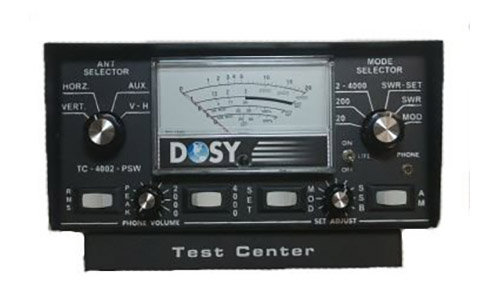Check out this Dosy TC4002PSW at www.WalcottRadio.com

www.walcottradio.com
Posted by BLUE BEAM
""Old post but I would like to clarify. This is simply not true! A Dosy meter uses a broad band toroid pick up. From 3Mhz to 29Mhz I personally know a Dosy is pretty darn good for what is was designed for!""
So the manufacture is not telling the truth either??
When you call someone out on the forum and say they are not telling the truth, back it up with facts.
frequency response is listed.
Meter may work over a broad frequency range but manufacturer states what frequency range it is designed for.

